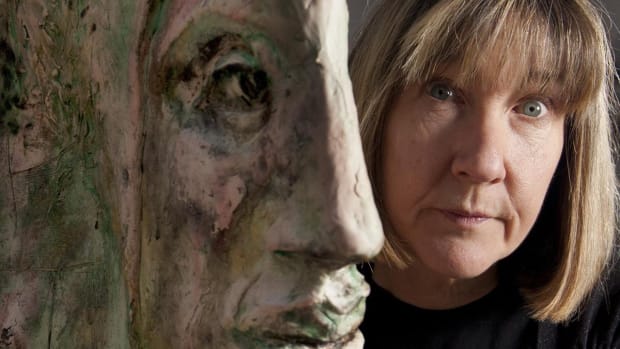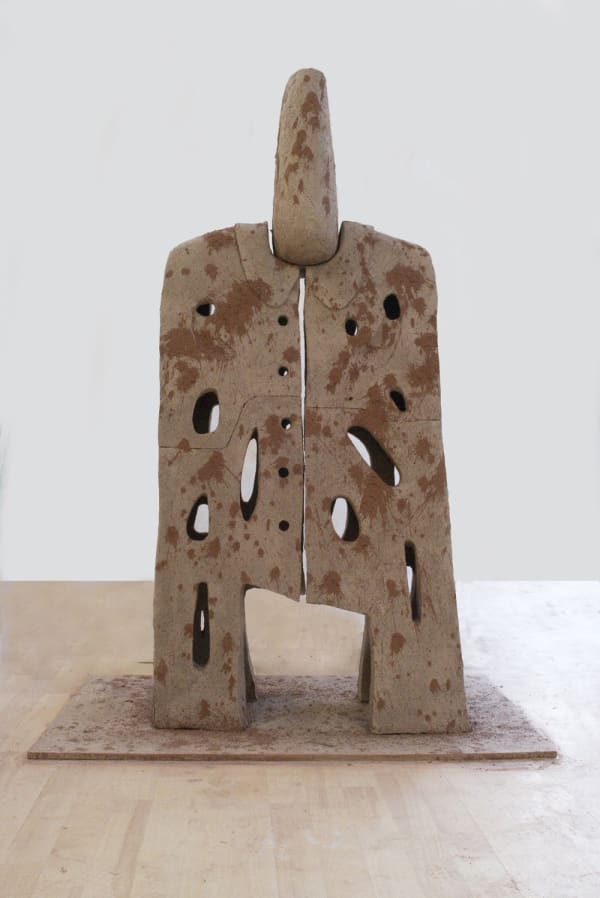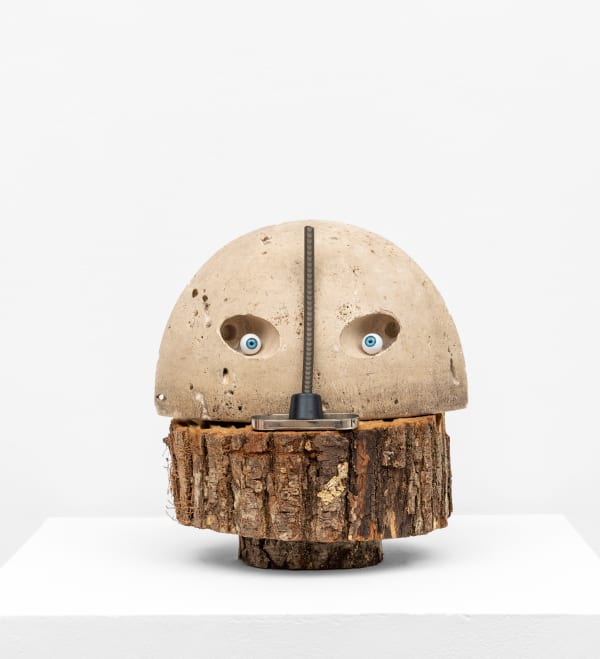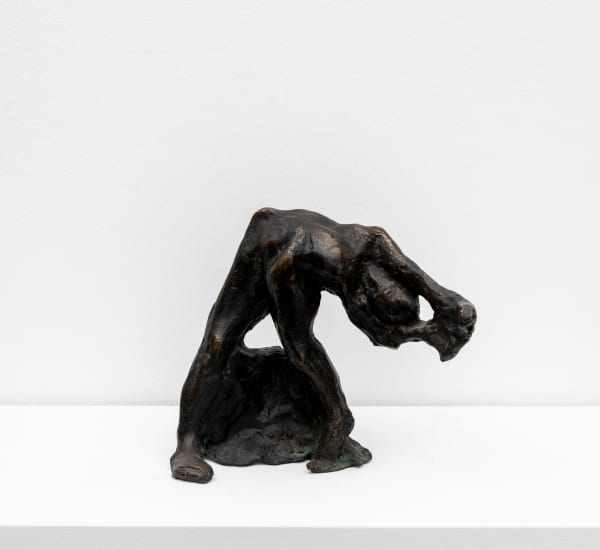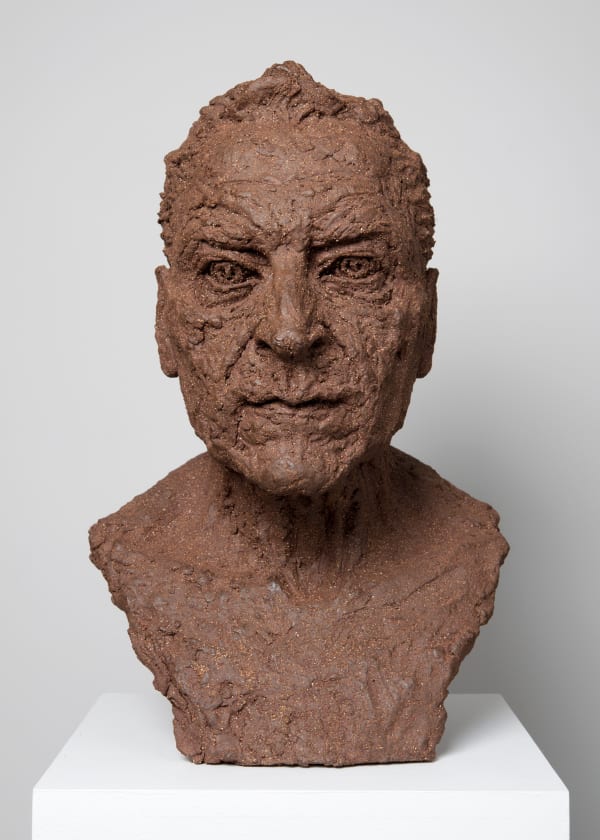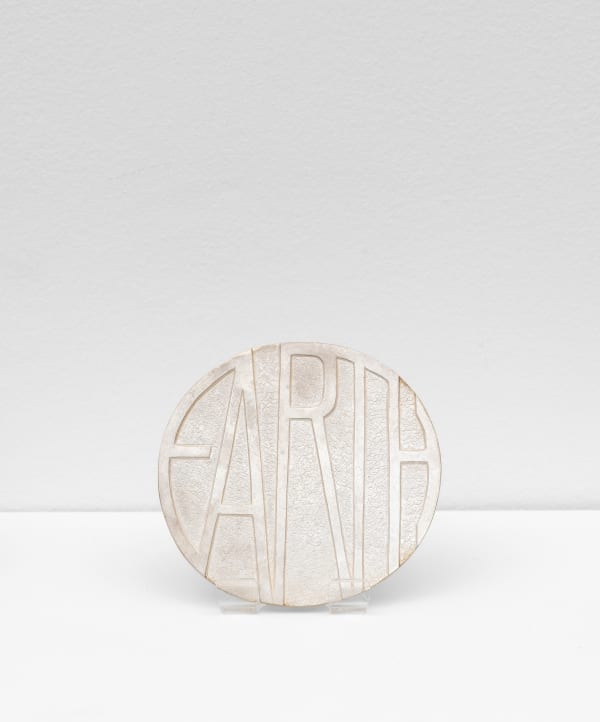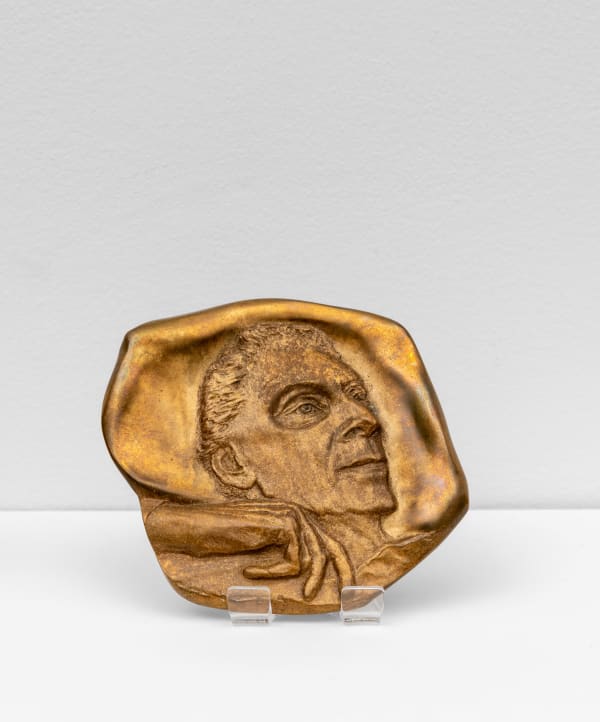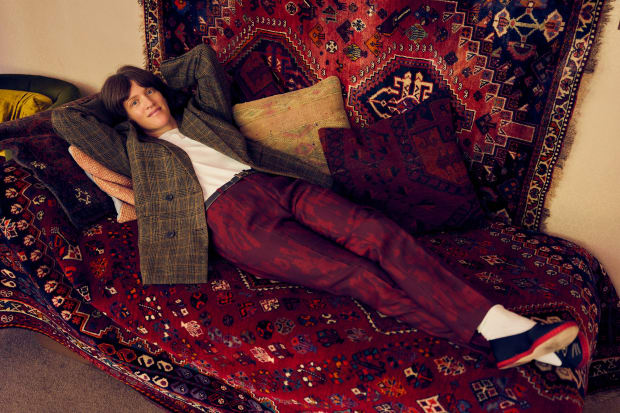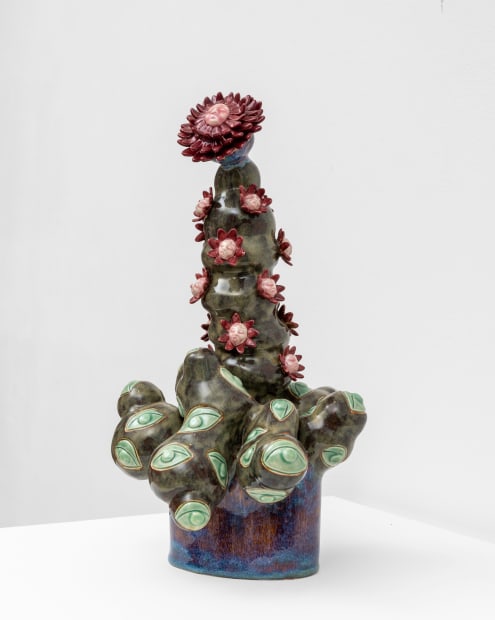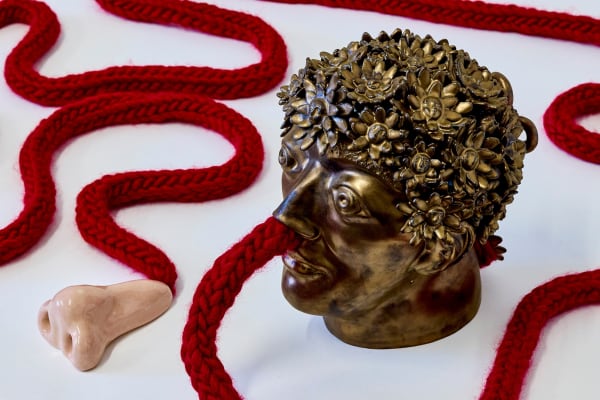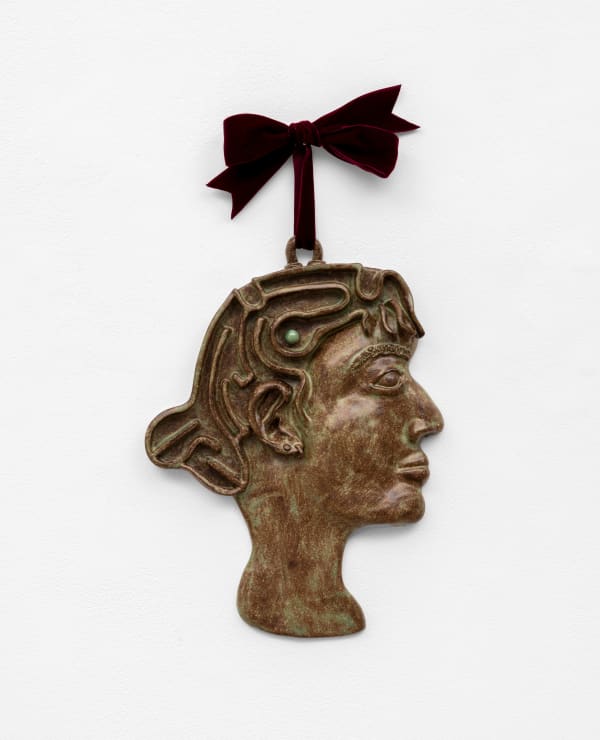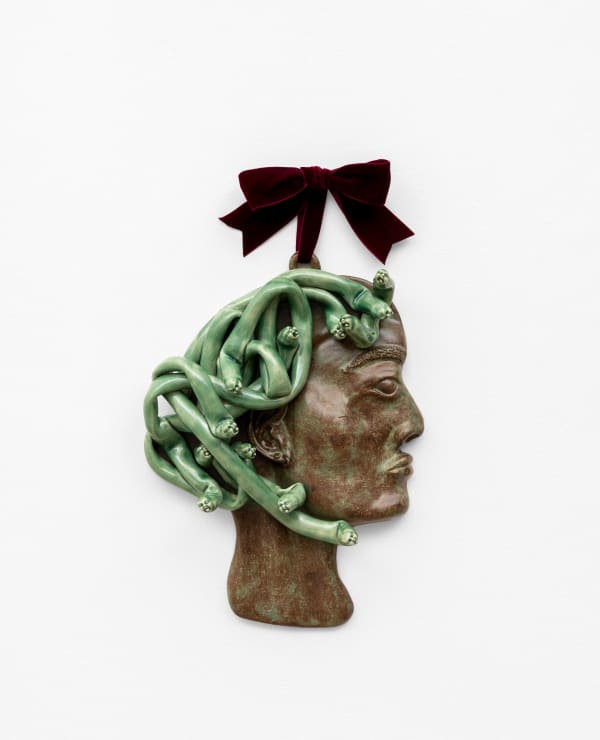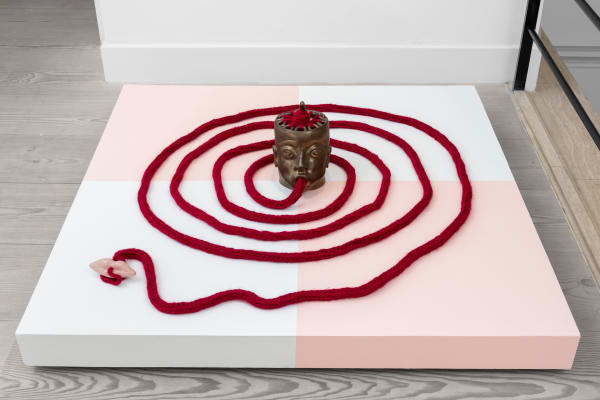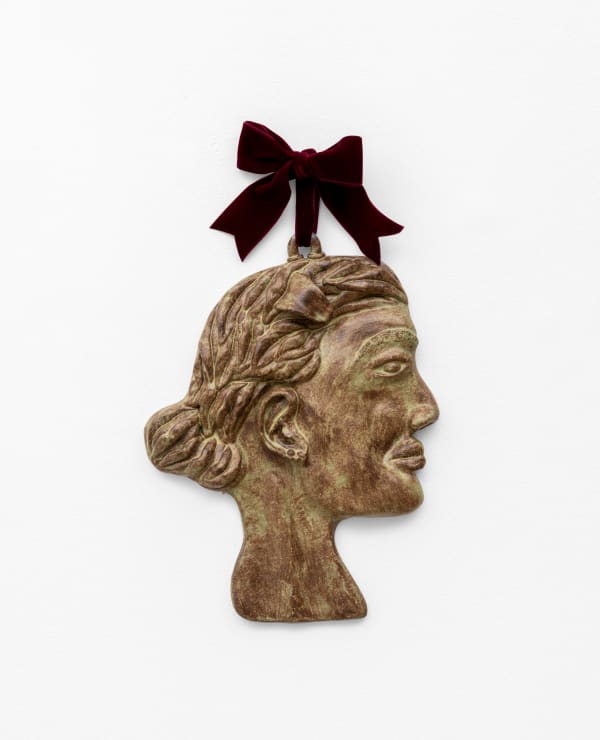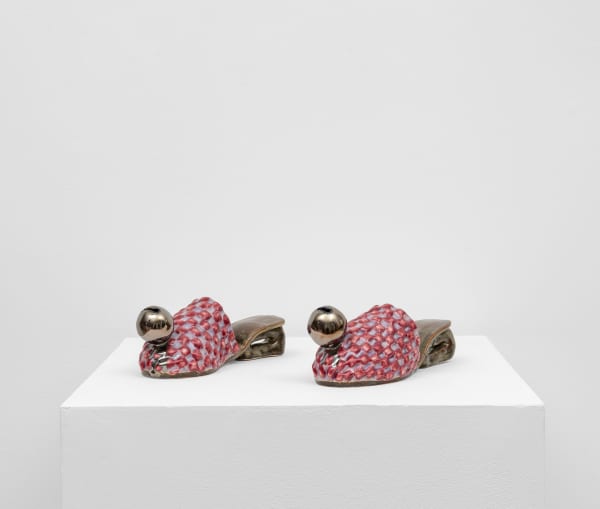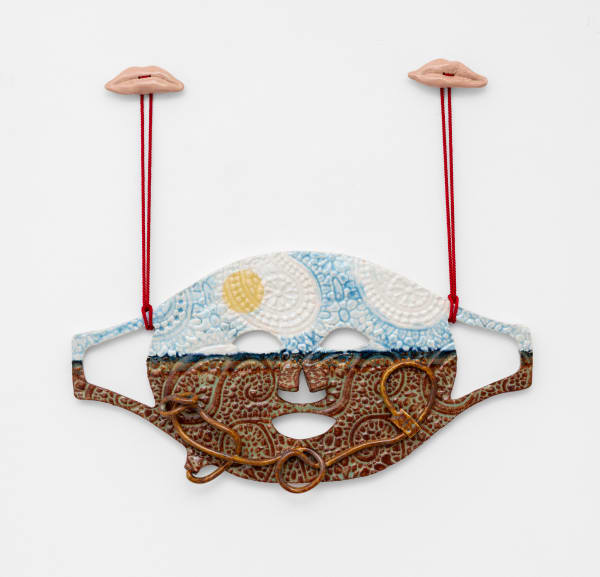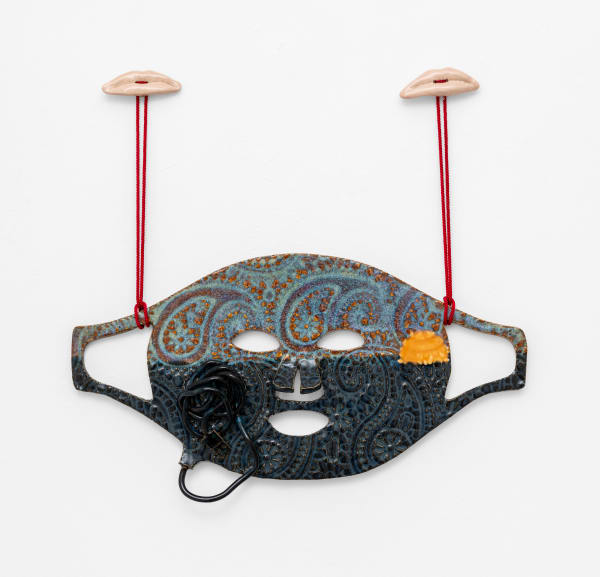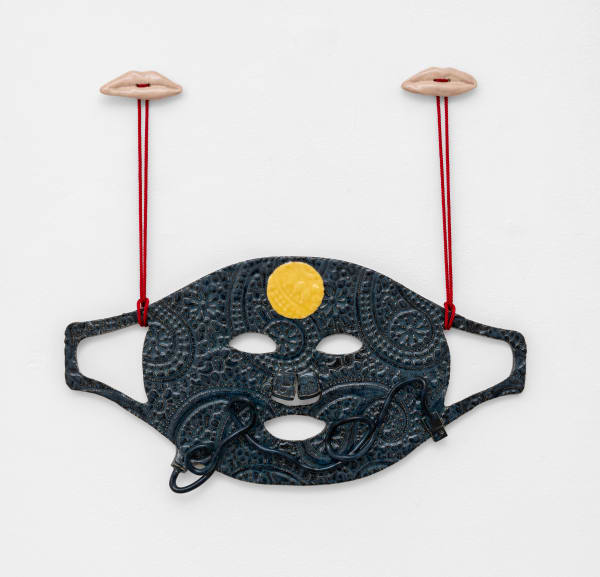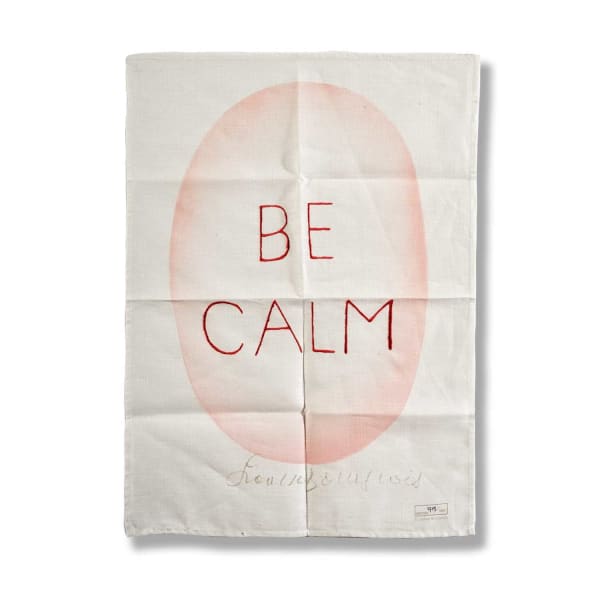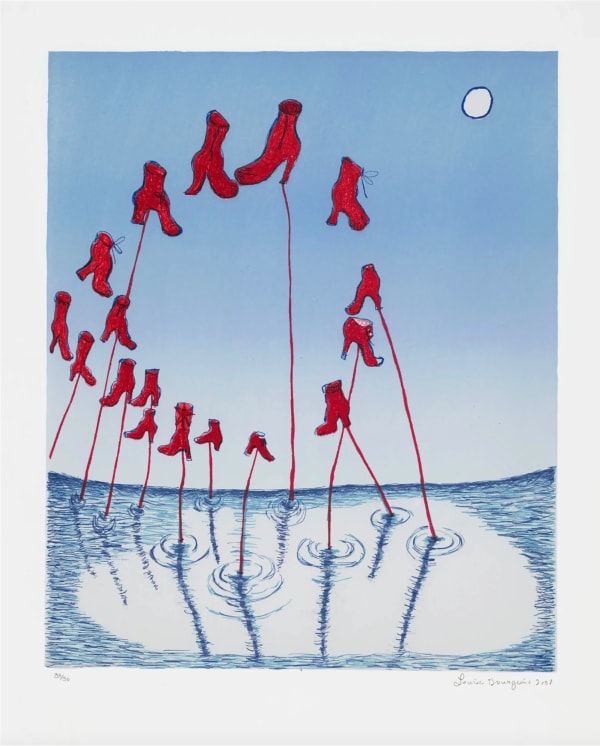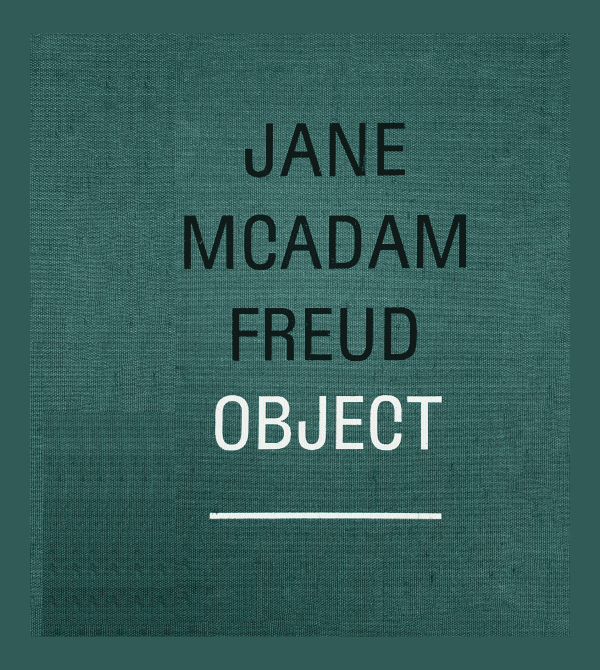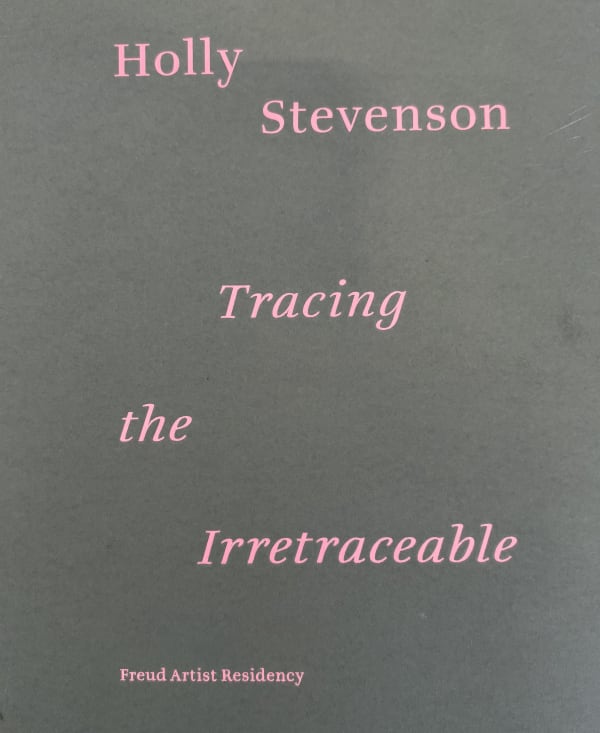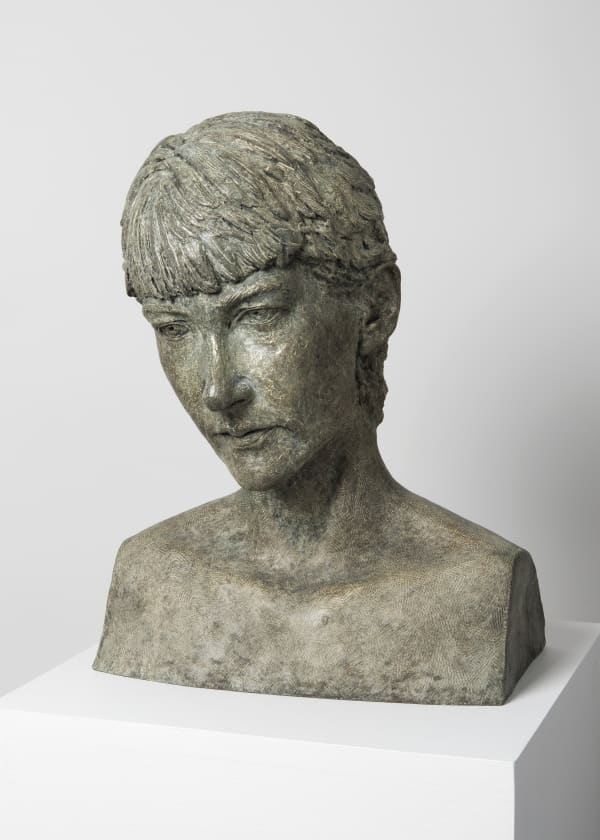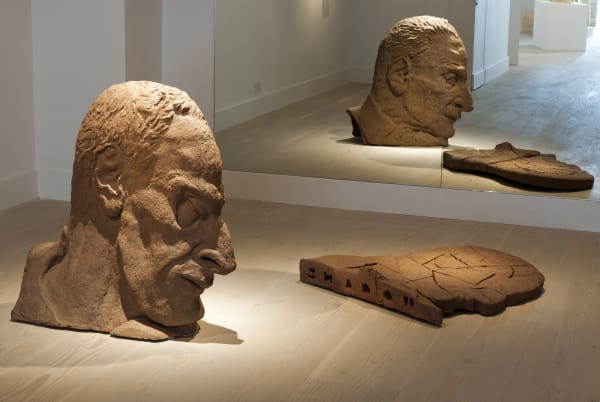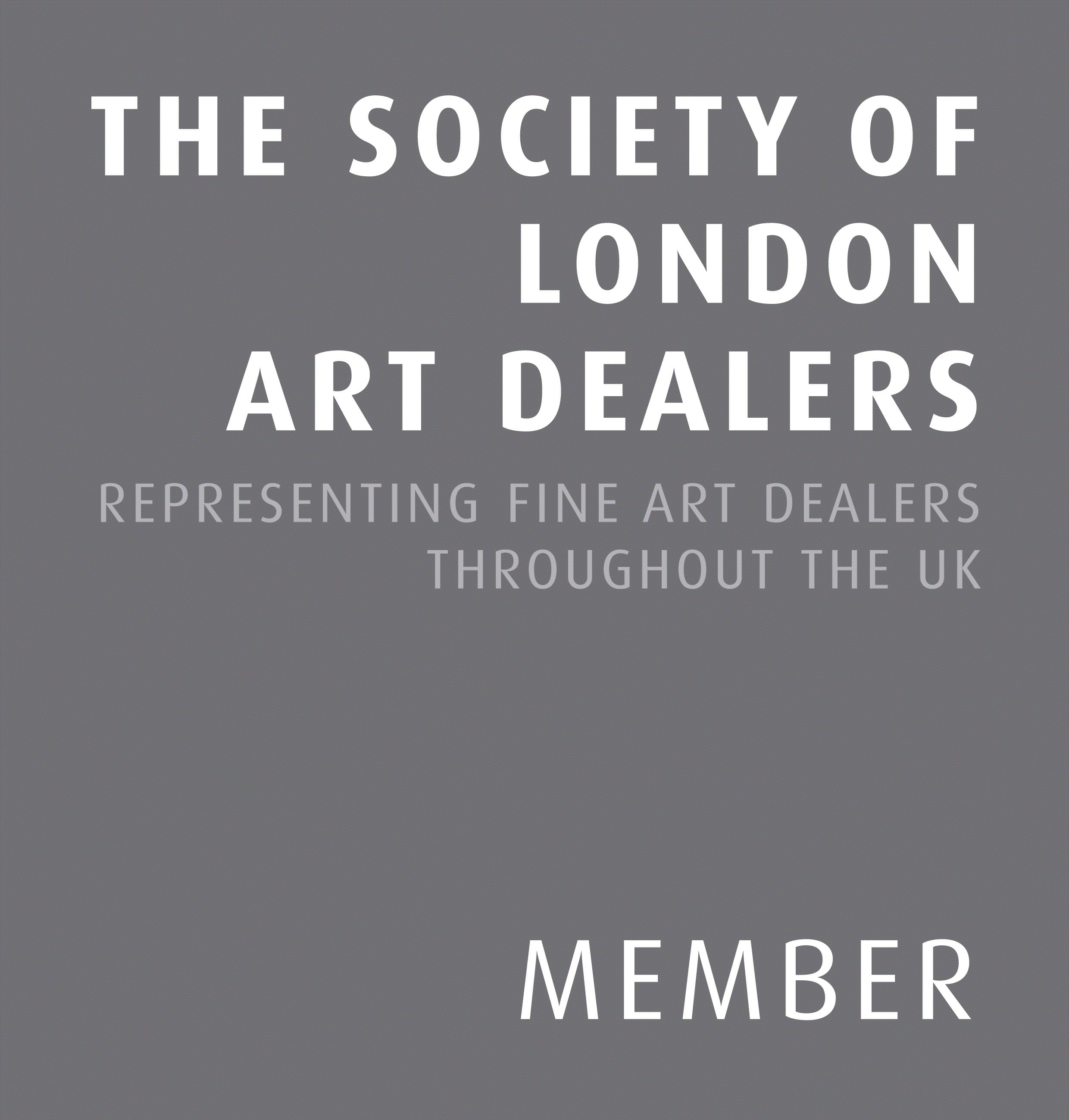-
-
“I work at the edges where art and psychoanalysis meet.”
— Jane McAdam Freud
An Absent Presence at Gazelli Art House is the first exhibition of Jane McAdam Freud’s work since her passing in 2022, bringing together deeply personal sculptures that explore life, death, and legacy, alongside works by Holly Stevenson and Louise Bourgeois. The show reflects on psychoanalysis, memory, and emotional inheritance through materials ranging from medals and chicken wire to ceramics and wool, with Stevenson responding directly to Jane’s legacy and their shared Freudian lineage. Across three generations of artists, the exhibition meditates on how objects can hold psychological weight and serve as vessels for presence, absence, and transformation. -

-
JANE MCADAM FREUD
1958–2022Jane McAdam Freud dedicated her creative output to the exploration of life, death and the libido. Through key pieces from across her career, An Absent Presence examines Jane’s astute philosophical and psychological approach to art making. It reveals the breadth and technical ability of her practice, expressed through a multitude of medium and scale, from intimate hand-held sculptures to larger-than-life installations. The exhibition seeks to raise questions about the ability of objects to contain and transmit the presence of their maker or owner. Jane explained that her works existed in the ether before she gave them form. She described her authorship as being “an absent presence”, stating “it came before me and goes on after me, it doesn’t live and die as flesh does.”
Often referring to the cathartic nature of making art as a way to process one’s emotion, Jane differentiated it from therapy. For her, therapy is about “talking it all out”, while art is about “feeling it all out.” Through her bold and varied sculptural practice Jane processed her ancestry, trauma and life experiences through the act of making – her art gave life to her emotions and experiences.
-

-
-
 Jane McAdam Freud, If I Were U, 2012
Jane McAdam Freud, If I Were U, 2012 -
 Jane McAdam Freud, You Kill Me, 2016
Jane McAdam Freud, You Kill Me, 2016 -
 Jane McAdam Freud, Alien, 2019
Jane McAdam Freud, Alien, 2019 -
 Jane McAdam Freud, Breadbook, 2015-2016
Jane McAdam Freud, Breadbook, 2015-2016
-
-

-
-
HOLLY STEVENSON
b. 1975Holly Stevenson presents ceramic pieces made in 2024 in response to Jane’s life and work and the enduring legacy of psychoanalytic theories. The works were first presented as part of the inaugural Freud Artist Residency (F.A.R.) in Příbor, Czech Republic, the birth-place of Sigmund Freud and second home to Jane McAdam Freud. The exhibition was titled Tracing The Irretraceable with Stevenson installing her works alongside Jane’s and reflecting on the act of tracing as both a psychoanalytical and artistic method.
Stevenson was especially influenced by Jane’s self-portraits and depictions of family, which prompted her to make a body of work more explicitly figurative and personal than before. These include Hector Speaks Volumes (2024) which depicts her son in a golden glazed ceramic, with red knitted wool spooling from his mouth. Stevenson, in the footsteps of Jane, questions how artefacts become significant beyond their individual intrinsic beauty or craftsmanship; they hold the remains of the past actions of their makers and owners.
-

-

-
-
Louise Bourgeois
1911–2010
-
-
Presence and Absence in the Art of Jane McAdam Freud
by Alyce MahonRenowned art historian and professor Alyce Mahon reflects on the works of Jane McAdam Freud on the occasion of the artist's first posthumus exhibition at Gazelli Art House.
A small stoneware clay sculpture that fits in the palm of the hand with a smaller red moulding clay insertion rounding out its concave belly on one side, all under the inscribed word ‘PRESENCE’, and a voided concave on the other side, under the incised word ‘ABSENCE’, perfectly encapsulates the aesthetic of Jane McAdam Freud (1958–2022). It is an emphatically haptic work that wants to be held and inspected in the hand; it is the subtle play of texture and text that lends this sculpture its significance. The intimate scale ensures a familiarity – one thinks of a medal, a wish or worry stone, or the gentle, erotic touch of a thumb or finger – while the dialogue between its form and its inscription opens a chain of associations allowing that sense of familiarity to become beautifully strange such that a tangible piece becomes a conceptual act.
As W.T.J. Mitchell writes, “objects are the way things appear to the subject – that is, with a name, an identity […] Things on the other hand … [signal] the moment when the object becomes the Other, when the sardine can looks back, when the mute idol speaks, when the subject experiences the object as uncanny.”1 McAdam Freud lingers in this peculiar sense of the object as the Other, in all its uncanny potential. In 2017 she spoke of her great-grandfather Sigmund Freud and his concept of the unheimlich (uncanny) as facilitating “an artist’s attempt to express an ambivalent or even antithetical emotion via an object, or indeed, subject.”2
A comparison between the bust Portrait of My Father (2010) and the two-faced relief sculpture titled Earthstone Triptych (2011) teases out this idea. We find a shift in the portraits of her father, Lucian Freud, drawn from life and then his deathbed, through her treatment of clay. In the former, we bear witness to the upright commanding face of a patriarch, the imprint of her working hands a sign and symbol of her bond; in the latter we greet an entropic form, its state of decay reflected by the open eye on one side, a closed one on the other, and the sculpture template flat on the floor, casting a shadow and incised into parts “reflecting [her] present and absent siblings”.3 Completed after her father’s death, his presence is magnified by a mirror such that it becomes a memento mori – an homage to his memory and memory as a process.
Sigmund Freud’s understanding of the object as Other, where it sheds light on our subjective experience, also resonates with McAdam Freud’s turn to bric-a-brac and the found object to construct assemblages. Brass (2015) seems to nostalgically hark back to the flea market finds of the Surrealists in the 1920s, while the polished letters bring a Sixties, Pop Art, aesthetic to mind. The addition of language again shifts our phenomenological experience of the work: its distorted, amputated form and crushed orifice is emphatically mute while the bold advertising-like vibrancy of the letters spelling out ‘BRASS’ gives it a voice. Digging for God (2017), also plays with the power of words and their ability “to impart a description and suggest an instruction.”4 Not unlike Marcel Duchamp’s Dada readymade In Advance of a Broken Arm (1915), we are witnessing a critique of the very idea of objecthood, where one thing powers over another.
In Beyond the Pleasure Principle (1920), Freud wrote of his grandson’s play with a wooden reel that he would throw skilfully “over the edge of his curtained cot so that it disappeared inside, all the while making his expressive ‘o-o-o-o’ sound, then used the string to pull the reel out of his cot again, but this time greeting its reappearance with a joyful Da! (‘Here!).”5
It evidenced the child’s “immense cultural achievement” in managing absence and loss as the toy symbolises the mother from whom he is gradually being distanced. McAdam Freud’s Us (2011) is a striking example of such game play: Jane’s photographic portrait is cut and pasted (there is no photo editing manipulation) in dialogue with a portrait of Lucian. Their intense artistic gazes – an eye of each – fuse mid sequence, and then we find the imprint of the father poetically defied by his daughter. His absence finally becomes her presence, her artwork.
1. WJT Mitchell, What Do Pictures Want? The Lives and Loves of Images, University Chicago Press, 2005, pp. 156-57. 2. Jane McAdam Freud, Object Authority, exh.cat., Harrow School London, 2017, np.
3. Jane McAdam Freud, “Lost Wax to Lost Fathers”, Grief and its Transcendence, Installations by British sculptor Jane McAdam Freud, Adele Tutter and Léon Wurmser (eds), Routledge, 2015, p.138.
4. Jane McAdam Freud, quoted in Estelle Lovatt, Object: Fix Me in Your Turquoise Gaze, exh. cat. Gazelli House, London, 2017, p.10.
-
Alyce Mahon is Professor of Modern and Contemporary Art History and a Fellow of Trinity College at the University of Cambridge. She is the author of Surrealism and the Politics of Eros, 1938-1968 (2005), Eroticism & Art (2005 & 2007), The Marquis de Sade and the Avant-Garde (2020), the edited volumes Jean-Jacques Lebel: Barricades (Walther Konig, 2015) and Dorothea Tanning (Museo Reina Sofia & Tate Publishing, 2018), as well as numerous book chapter, journal and catalogue essays on avant-garde, feminist, and contemporary art. Mahon is also the co-editor of the International Journal of Surrealism [IJS] published by Minnesota University Press and serves on the Board of the International Society for the Study of Surrealism [ISSS]. As exhibition curator and scientific advisor, recent projects include Leonor Fini: Theatre of Desire [MoSex, New York 2018- 19], Dorothea Tanning: Behind the Door Another Door [Reina Sofia Museum, Madrid and Tate Modern, London, 2018-2019], SADE: Freedom or Evil [CCCB, Barcelona, 2023], Surrealism in the Service of Distraction [Galerie Raphael Durazzo, Paris, 2024], and Ithell Colquhoun: A World Apart [Tate St Ives, Cornwall and Tate Britain, London, 2025].
-
PUBLICATIONS
-

Object – Fix Me in Your Turquoise Gaze
Jane McAdam Freud Gazelli Art House is delighted to present new works by Jane McAdam Freud in her upcoming exhibition Object – Fix Me in Your Turquoise Gaze . Created during the artist’s... -

Holly Stevenson: Tracing the Irretraceable
Published on the occasion of Holly Stevenson's Freud Artist Residency
-
-
NEWS
-

Exhibition Preview | Jane McAdam Freud: An Absent Presence
A RETROSPECTIVE IN DIALOGUE WITH LOUISE BOURGEOIS AND HOLLY STEVENSON July 3, 2025 An Absent Presence at Gazelli Art House is the first exhibition of Jane McAdam Freud’s work since her passing in 2022, bringing together deeply personal sculptures that explore life, death,... -

Mayfair Times | An Absent Presence
July 1, 2025 Mayfair Times highlights Jane McAdam Freud: An Absent Presence, an upcoming exhibition at Gazelli Art House. Jane McAdam Freud's study into psychoanalysis through her art invites a retrospective dialogue with... -

FAD Magazine | An Absent Presence
July 13, 2025 FAD Magazine highlights must see exhibitions in London, which includes Jane McAdam Freud: An Absent Presence | A retrospective in dialgue with Holly Stevenson and Louise Bourgeois. The article spotlights... -

ArteFuse | An Absent Presence
August 8, 2025 ArteFuse reviews Jane McAdam Freud: An Absent Presence | A Retrospective in Dialogue with Louise Bourgeois and Holly Stevenson, highlighting several works from the exhibition including Poetic Encounter (2014–15) and... -

What's On | An Absent Presence
What's On picks the top 7 must-see exhibitions to see in London this month, which includes Jane McAdam Freud: An Absent Presence | A Restrospective in Dialogue with Louise Bourgeois...
-
-
EVENT
-
VIRTUAL EXHIBITION
JANE MCADAM FREUD: AN ABSENT PRESENCE: A RETROSPECTIVE IN DIALOGUE WITH LOUISE BOURGEOIS AND HOLLY STEVENSON
Past viewing_room

